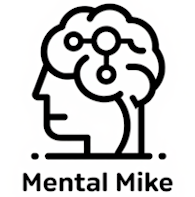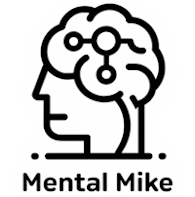There’s a phrase you hear often in recovery spaces: “white-knuckling it.” It refers to the effort of staying sober through sheer willpower, gripping tightly to abstinence while internally unraveling. White-knuckling is often praised as a sign of commitment. But in reality, it’s a red flag, one that signals nervous system dysregulation and an unsustainable path.
In the Unified Flux Model (UFM), we understand that long-term recovery depends not on force, but on energetic and neurological coherence. White-knuckling reflects the opposite: a state of internal dissonance where the body is bracing, the mind is rigid, and survival mode is dominating all systems. This article explores why white-knuckling doesn’t work - not because people are weak, but because biology demands integration. We’ll look at the neurophysiology of compulsion, the energetic cost of suppression, and why nervous system regulation must replace sheer grit in any meaningful healing process.
What White-Knuckling Feels Like
Clients who are white-knuckling report:
White-knuckling feels like sitting on a volcano. The eruption is just beneath the surface, and every ounce of effort goes into not exploding. This strategy may work for hours, days, or even weeks - but it drains energy, increases cortisol, and heightens the risk of relapse due to unsustainable inner resistance.
The Polyvagal Explanation: Your Nervous System Isn’t On Board
Dr. Stephen Porges’ Polyvagal Theory provides a powerful lens for understanding why white-knuckling backfires. According to this framework, the autonomic nervous system operates across three states:
White-knuckling typically arises when someone is stuck in the sympathetic state, charged with anxiety or craving but unable to discharge it in healthy ways. Because the body is in fight-or-flight, cognitive access to empathy, patience, or future-oriented thinking is severely limited (Dana, 2018). This is why willpower alone often fails: you can’t out-think a nervous system that’s in survival mode. You have to bring it back into regulation first.
The Energetic View: Gripping Blocks Flow
From a UFM perspective, white-knuckling also represents an energetic constriction. The individual is clamping down on their field - tightening around trauma, pain, and compulsion - instead of releasing, circulating, and transforming it.
Energetic constriction shows up as:
In short, the field goes rigid. But healing requires fluidity. Energy must move, emotion must metabolize, and the system must remain adaptable. White-knuckling interrupts this process and turns sobriety into a performance of control rather than a process of coherence.
Why “Just Say No” Fails the Body
The dominant recovery culture has often centered willpower, moral strength, or abstinence as the measure of success. But neuroscience offers a different truth: willpower is a limited resource, especially under stress. Baumeister et al. (2007) found that decision fatigue and emotional stress rapidly deplete willpower, leading to impulsive behavior and relapse. In people with trauma histories or co-occurring disorders, the capacity for cognitive override is even more limited. This is not a character defect. It’s a neurobiological reality. A dysregulated system cannot hold sobriety alone. It needs supportive rhythms, grounding tools, relational repair, and energetic realignment.
What Works Instead? Regulate, Relate, Rewire
Instead of white-knuckling, we teach clients to build capacity, to create a nervous system and energetic field that can tolerate discomfort without going into shutdown or panic.
1. Regulate the Body
Clients learn to identify dysregulation early (tight jaw, racing thoughts, short breath) and intervene through:
These interventions downshift the autonomic response, bringing the system back into ventral vagal safety.
2. Relate to Others
Connection is medicine. Social co-regulation, eye contact, tone of voice, gentle presence, activates the social engagement system and restores neurobiological balance (Cozolino, 2014). This is why group therapy, peer mentorship, and embodied counselors are so powerful: they’re not just giving advice, they’re regulating your system.
3. Rewire the Pathways
Once safety is restored, clients can begin cognitive restructuring, habit reformation, and deep trauma work. But without regulation first, these efforts are like building a house during an earthquake. In UFM, we also teach energetic rewiring through visualization, ritual, and daily flux alignment practices, so healing becomes a whole-system experience.
The Cost of Pushing Through
Clients who attempt long-term sobriety through white-knuckling often burn out. Their bodies revolt, their emotions explode, or their willpower snaps under the weight of accumulated tension. These relapses are often filled with shame, but they don’t have to be. Relapse, in this context, isn’t moral failure, it’s nervous system overload. When clients are taught to recognize the signals of energetic and somatic depletion, they can intervene much earlier, with compassion, not force.
Real Recovery Feels Different
Recovery grounded in coherence, not control, looks and feels different:
You don’t feel like a fraud, you feel like a person returning to flow. The Unified Flux Model supports this process by aligning brain, body, and field so sobriety becomes an expression of wholeness, not a struggle for survival.
Final Words: Don’t Grip. Anchor
White-knuckling is gripping. It’s fear masquerading as commitment. It’s desperation instead of transformation. And while it may look like strength, it usually ends in collapse. In UFM, we teach a different strategy: don’t grip. Anchor.
Let sobriety arise not from force, but from flow. You don’t have to hold on with everything you’ve got.
You just have to stop resisting the energy that wants to carry you home.
In the Unified Flux Model (UFM), we understand that long-term recovery depends not on force, but on energetic and neurological coherence. White-knuckling reflects the opposite: a state of internal dissonance where the body is bracing, the mind is rigid, and survival mode is dominating all systems. This article explores why white-knuckling doesn’t work - not because people are weak, but because biology demands integration. We’ll look at the neurophysiology of compulsion, the energetic cost of suppression, and why nervous system regulation must replace sheer grit in any meaningful healing process.
What White-Knuckling Feels Like
Clients who are white-knuckling report:
- Intense cravings with no inner tools to manage them
- Muscle tension, shallow breathing, clenched jaw
- Constant anxiety, irritability, or depression
- Feeling like they're “faking” recovery while desperately trying to hold on
- Deep fear of failure with little sense of internal stability
White-knuckling feels like sitting on a volcano. The eruption is just beneath the surface, and every ounce of effort goes into not exploding. This strategy may work for hours, days, or even weeks - but it drains energy, increases cortisol, and heightens the risk of relapse due to unsustainable inner resistance.
The Polyvagal Explanation: Your Nervous System Isn’t On Board
Dr. Stephen Porges’ Polyvagal Theory provides a powerful lens for understanding why white-knuckling backfires. According to this framework, the autonomic nervous system operates across three states:
- Ventral Vagal (Safety + Connection): Calm, social, regulated
- Sympathetic (Mobilization): Fight or flight
- Dorsal Vagal (Shutdown): Freeze or collapse
White-knuckling typically arises when someone is stuck in the sympathetic state, charged with anxiety or craving but unable to discharge it in healthy ways. Because the body is in fight-or-flight, cognitive access to empathy, patience, or future-oriented thinking is severely limited (Dana, 2018). This is why willpower alone often fails: you can’t out-think a nervous system that’s in survival mode. You have to bring it back into regulation first.
The Energetic View: Gripping Blocks Flow
From a UFM perspective, white-knuckling also represents an energetic constriction. The individual is clamping down on their field - tightening around trauma, pain, and compulsion - instead of releasing, circulating, and transforming it.
Energetic constriction shows up as:
- Closed chest, holding breath, internal bracing
- Suppression of emotional expression
- Rigid beliefs or moralizing about relapse
- Blocking external support or connection
In short, the field goes rigid. But healing requires fluidity. Energy must move, emotion must metabolize, and the system must remain adaptable. White-knuckling interrupts this process and turns sobriety into a performance of control rather than a process of coherence.
Why “Just Say No” Fails the Body
The dominant recovery culture has often centered willpower, moral strength, or abstinence as the measure of success. But neuroscience offers a different truth: willpower is a limited resource, especially under stress. Baumeister et al. (2007) found that decision fatigue and emotional stress rapidly deplete willpower, leading to impulsive behavior and relapse. In people with trauma histories or co-occurring disorders, the capacity for cognitive override is even more limited. This is not a character defect. It’s a neurobiological reality. A dysregulated system cannot hold sobriety alone. It needs supportive rhythms, grounding tools, relational repair, and energetic realignment.
What Works Instead? Regulate, Relate, Rewire
Instead of white-knuckling, we teach clients to build capacity, to create a nervous system and energetic field that can tolerate discomfort without going into shutdown or panic.
1. Regulate the Body
Clients learn to identify dysregulation early (tight jaw, racing thoughts, short breath) and intervene through:
- Breathwork (especially box breathing or 4-7-8)
- Cold water exposure or grounding touch
- Somatic practices like shaking, stretching, or rocking
- Vagal toning (e.g., humming, chanting, deep exhale)
These interventions downshift the autonomic response, bringing the system back into ventral vagal safety.
2. Relate to Others
Connection is medicine. Social co-regulation, eye contact, tone of voice, gentle presence, activates the social engagement system and restores neurobiological balance (Cozolino, 2014). This is why group therapy, peer mentorship, and embodied counselors are so powerful: they’re not just giving advice, they’re regulating your system.
3. Rewire the Pathways
Once safety is restored, clients can begin cognitive restructuring, habit reformation, and deep trauma work. But without regulation first, these efforts are like building a house during an earthquake. In UFM, we also teach energetic rewiring through visualization, ritual, and daily flux alignment practices, so healing becomes a whole-system experience.
The Cost of Pushing Through
Clients who attempt long-term sobriety through white-knuckling often burn out. Their bodies revolt, their emotions explode, or their willpower snaps under the weight of accumulated tension. These relapses are often filled with shame, but they don’t have to be. Relapse, in this context, isn’t moral failure, it’s nervous system overload. When clients are taught to recognize the signals of energetic and somatic depletion, they can intervene much earlier, with compassion, not force.
Real Recovery Feels Different
Recovery grounded in coherence, not control, looks and feels different:
- You’re sober, but not at war with yourself
- Cravings come and go, and you remain the observer
- Emotions are intense, but tolerable
- Relationships deepen, not just improve behaviorally
You don’t feel like a fraud, you feel like a person returning to flow. The Unified Flux Model supports this process by aligning brain, body, and field so sobriety becomes an expression of wholeness, not a struggle for survival.
Final Words: Don’t Grip. Anchor
White-knuckling is gripping. It’s fear masquerading as commitment. It’s desperation instead of transformation. And while it may look like strength, it usually ends in collapse. In UFM, we teach a different strategy: don’t grip. Anchor.
- Anchor into breath.
- Anchor into light.
- Anchor into relationship, ritual, rhythm, and resonance.
Let sobriety arise not from force, but from flow. You don’t have to hold on with everything you’ve got.
You just have to stop resisting the energy that wants to carry you home.
References
Baumeister, R. F., Vohs, K. D., & Tice, D. M. (2007). The strength model of self-control. Current Directions in Psychological Science, 16(6), 351–355. https://doi.org/10.1111/j.1467-8721.2007.00534.x
Cozolino, L. (2014). The neuroscience of human relationships: Attachment and the developing social brain (2nd ed.). W. W. Norton & Company.
Dana, D. (2018). The Polyvagal Theory in therapy: Engaging the rhythm of regulation. W. W. Norton & Company.
Cozolino, L. (2014). The neuroscience of human relationships: Attachment and the developing social brain (2nd ed.). W. W. Norton & Company.
Dana, D. (2018). The Polyvagal Theory in therapy: Engaging the rhythm of regulation. W. W. Norton & Company.



